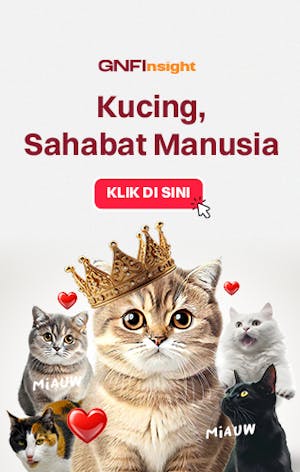Abdullah rubbed the handle of a dagger made from a buffalo horn, so engrossed that his finger started to bleed. But the small amount of blood did not prevent him from proceeding with his work. “I’m used to being injured. It’s enough to wash it with an antiseptic,” he said, his face showing no pain. Abdullah, 59, used to produce the traditional Acehnese weapon called rencong in Baet village, Aceh Besar, where most residents — besides being farmers — are rencong makers. He produced rencong commercially for 38 years, learning how to create the weapon in the traditional manner from his father, who had inherited the knowledge from Abdullah’s grandfather. A few years ago, Abdullah stopped making rencong because it was no longer economically viable to produce the blades according to traditional methods. Most of Aceh’s present-day rencong producers require no special skills, as molds are now used. Craftsmen only need to pour molten metal into rencong molds to mass produce the blades at a low cost. “Even children can now make rencong by casting. The conventional method takes more time and energy with a less commensurate reward,” he said. And, the market price for traditionally wrought rencong is not proportional. According to Abdullah, the traditional production of this ancestral weapon involves the heating and hammering of metal as well as particular skills not known to all. “Only a few traditional rencong makers are left in Baet. The rest have turned to the casting method,” Abdullah said. Even the few skilled craftsmen are mostly middle-aged, and are struggling to survive by producing ordinary daggers and other sharp instruments now selling at higher prices. Traditional rencong maker Zuhri Hasyim has spent half of his life forging the weapon. “I have continued with the traditional method because I have my own customers buying at a different price,” he said. Zuhri, 50, said that as rencong have become a souvenir from Aceh, his peers have sought quick and practical ways of casting the blades. The high demand forced most craftsmen to work extra fast by sacrificing quality. “Rencong shaped by hammering is of higher quality than products that were cast,” Zuhri said. Making the weapon by the old method was far different from modern production. The traditional blade would take at least six months to produce at a high cost because former craftsmen only worked on certain days of the week to secure supernatural power. “The cost of rencong forging is equivalent to 3.3 grams of pure gold or around Rp 1.3 million [US$150] per blade,” Zuhri said. Formerly, only wealthy people or those selling cattle or land could afford to buy rencong. With molten brass as its main material, rencong casting takes only minutes, with one craftsman turning out 10 to 15 blades a day, while with the old method a craftsman could produce between 5 and 10. After being cast, the blades are polished and fitted with handles and sheaths usually made from buffalo horn or elephant tusk. The work also involves children who work as junior rencong craftsmen in Baet. Before they became souvenirs, rencong were heirlooms that had been used in battle. Nearly every famous Acehnese hero, including Cut Nyak Dhien and Cut Meutia, relied on the weapon when Dutch colonizers tried to occupy the area. Aceh is even called the “Land of Rencong”. But now, rather than being deadly, rencong have become a best-selling item in Aceh’s souvenir shops — sought by local as well as foreign tourists. “We can sell 100 to 200 blades a month. In Banda Aceh, there are more than 20 souvenir shops offering rencong,” said Fadil, an employee of the Putroe Aceh shop. In the Dutch colonial period, rencong were the most effective killer of Dutch soldiers, which prompted the Netherlands to call such killings “Atjeh moorden” (Aceh massacres). “At the time, Dutch troops were on high alert for Acehnese fighters who dared to stab soldiers’ bellies with the weapon,” said Aceh Information Documentation Center director Rusdi Sufi. Ease: With rencong molds, a craftsman can produce between 10 and 15 blades a day. JP/Hotli Simanjuntak What the Dutch feared most was Acehnese stabbing their foes in close encounters, as rencong were small and not easily seen by would-be targets. Victims would have their bellies pierced and ripped apart so that the Dutch dubbed rencong “belly rippers”. Rusdi mentioned Ahmad Lepon, a resident of Lhok Sukon, North Aceh, who stabbed a Dutch captain with a rencong at a meeting. “Ahmad Lepon was seized on the spot and executed. But he showed his pride by having killed a Dutch soldier,” Rusdi said. Despite their unclear origins, rencong already existed in the period of the Aceh kingdoms and were inseparable from Aceh’s monarchs. According to Rusdi, rencong symbolize masculinity and they are carried on the waist as an accessory to various events like wedding ceremonies. In fact, rencong are not sharp like swords, but have a very pointed tip with one blunt side. The name comes from the Indonesian word runcing (pointed), meaning it is used for stabbing instead of cutting. Its other features are the partial S-shaped form of the blade and a curved handle for grip. “It’s alright to have a rencong as a souvenir because in this way Aceh is more widely introduced to the world,” said Rusdi, adding that rencong as gifts can serve to remind people of Aceh’s past glory through a formerly deadly weapon now serving as souvenir. News Source: The Jakarta Post
Cek berita, artikel, dan konten yang lain di Google News














